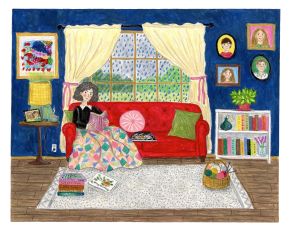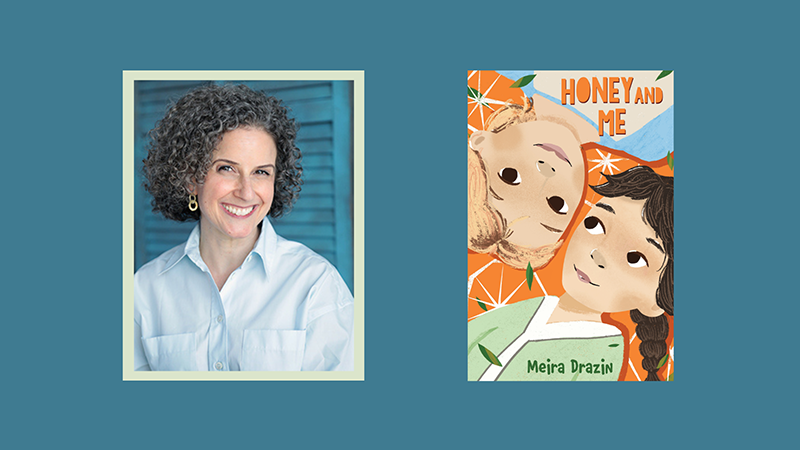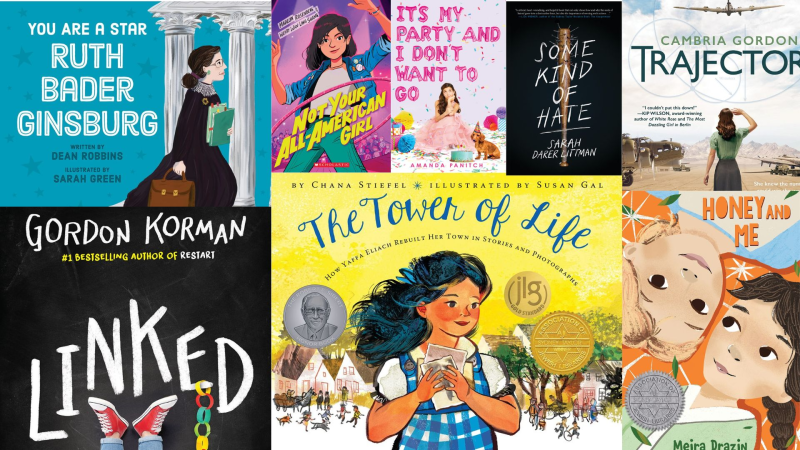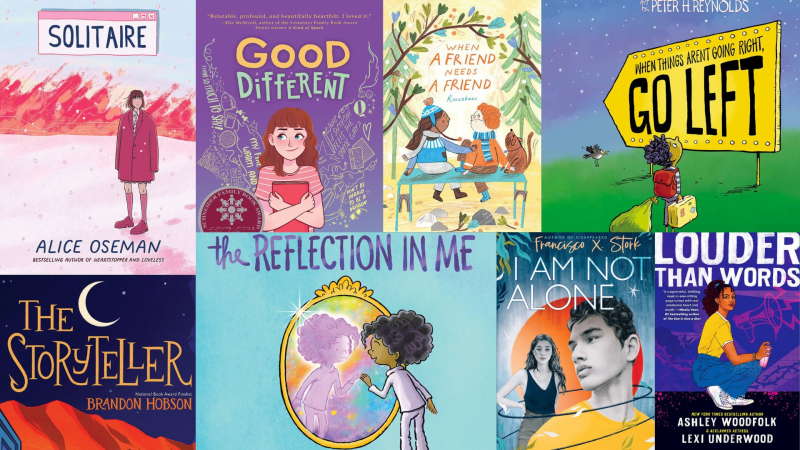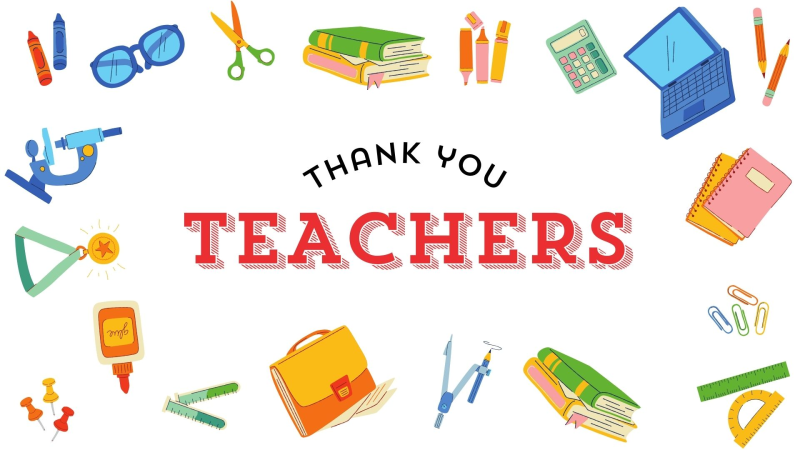This post was written by Brooks Jewell, Director, Scholastic Internal Communications.
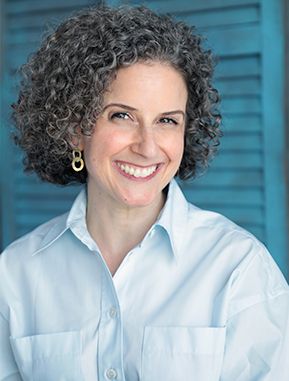
In her author’s note, Meira Drazin, author of Honey and Me, says that as a child she rarely saw books that reflected her Orthodox lifestyle. When she did read about Jewish people it was generally through the lens of the Holocaust. Obviously, it’s important for all children to learn about the crimes committed by the Nazis during World War II, but Meira also wants to share with children the richness and beauty of her culture – and so Honey and Me was born. There are things in the book that might be unfamiliar to some, like the fact that men and women worship separately or that some Orthodox women wear wigs outside the home, but any child can identify with Milla and her best friend Honey as they navigate growing-up, middle school, and deciding who they are – both together and as individuals.
As part of Jewish American Heritage Month in May, we caught up with Meira to talk about her prize-winning book and what’s next for her.
You’ve spoken a lot about the need for books that represent Jewish culture, do you hope Honey and Me is the first drop in a quickly filling bucket?
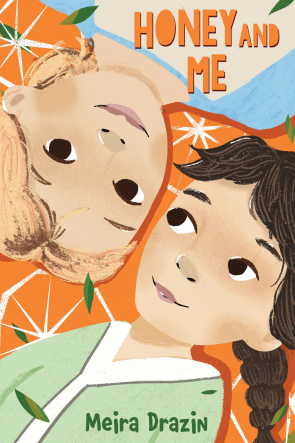
Absolutely. When I first had the idea for Honey and Me—a middle grade novel that had the feel of the beloved All-of-a-Kind Family books by Sydney Taylor where the Judaism was both integral yet incidental, and joyful, but set in today’s world rather than in the past, I did a search to find out if there was already anything like that already published. There wasn’t. Nor did it appear that there was anything else that fit that bill of Jewishness —and that wasn’t about the Holocaust—published since the All-of-a-Kind Family stories. And definitely not from a Modern Orthodox perspective. But in the time since I wrote the first draft, there has been an amazingly filling bucket of Jewish stories across children’s literature and across the spectrum of Jewish observance. And I don’t think it’s just a question of the more the merrier. Judaism and Jewish people are not a monolith and the more we have stories that provide windows and mirrors for all kinds of Jewish observance, culture, heritage and experience the more important for Jews and non-Jews alike—both for children to see themselves, and to understand others.
A few years ago there was a small article in the New York Times reviewing a new biography of Sydney Taylor, author of the All-of-a-Kind Family series. What blew me away were the comments, as readers took the time to reflect and reminisce with delight about these books from their own childhood. The comments could roughly be divided into three categories: Jewish people who loved recognizing themselves and/or learning about their history and religion; children of interfaith families for whom the books provided a link to their Jewish heritage; and people who quite literally credited reading these books as an antidote to the antisemitism they heard in their homes or among friends. These comments completely encapsulate for me what a warm and cozy coming-of-age story like Honey and Me can hopefully provide on top of a good read about friendship and growing up. And also, why in this time of unprecedented and terrifying modern antisemitism, there is an even greater need and obligation to keep filling buckets with books that represent Jewish culture and religion.
You mention that you grew up thinking that Jewish characters weren’t “legitimate” enough to write about -- what changed your
mind?
The third thing is that I workshopped these early stories in my writing class and at one point I asked everyone, ‘are these stories too Jewish?’ Implicit in the question was ‘…and is that a turn-off?’ The general feedback was ‘no,’ which was very validating. But the answer that most stood out to me was one woman who said that when she was a little girl in Kansas and had never met anyone Jewish, if she was reading these stories it would have seemed like a fantasy novel or any other kind of world-building to her. What I took to heart from that response was that it was up to me to write this book so that rather than feeling parochial, the specificity of the characters’ Jewishness and Modern Orthodox observance could be a way to be both particular and universal. And of course, that children who might first experience this Orthodox Jewish world akin to something in a fantasy novel, will soon discover that it is not only real but something they now know about.
In Honey and Me, an understanding of Orthodox customs is often taken for granted – but at other times you take time to explain the customs – especially around religious holidays. How did you decide what aspects of Honey and Milla’s culture needed more context?
As much as possible I tried to let the story unfold naturally and for the meaning of a word or explanation of a custom to become clear from the context or with as brief an explanation as possible without taking away from the flow of the story. This was my goal because I really wanted the Judaism normalized. At the same time, as someone who was coming from within the community, it was sometimes hard to determine how much or how little was needed and, as in all aspects of editing, this was something that very much benefited from the guidance and experience of my editors. For example, I would get a note asking me to try to weave in the meaning of something in the way I had done successfully in other places and they would provide me examples of where I had gotten it right. Another way of thinking of it is just like any world building— it’s important to get the balance right between not leaving your reader lost while at the same time showcasing a rich and layered world in which your characters interact. In the case of Honey and Me the world is a North American Modern Orthodox Jewish community. That being said, because this is very much not fantasy or something made-up, we also added a glossary at the end of the book that provides a definition for any Hebrew or Yiddish word found in the text as well as a brief explanation of the Jewish holidays.
Not to give any spoilers, but midway through the book Milla and Honey experience a shocking loss that reframes their relationship. Why did you feel that was important to the story and what does it say about their friendship?
Indeed, sometimes in a friendship, especially when there’s been a change in it that puts pressure on the relationship and requires growth from both parties—in this case Honey joining Milla’s school for sixth grade—we can start to focus on the negative or frustrating aspects of the other person. But a time of crisis and loss can put a hard stop to this negative lens because it puts in perspective how important the other person is to you, what’s important in general, and how talking or sharing something with a friend can be comforting or even just a way to process something terrible. For Milla and Honey they realize that whatever their legitimate issues are with the other, as well as the things they need to work on with themselves, their friendship and caring for each other supersedes all that. Ultimately there is far more positive in their friendship than negative, and their encounter with loss gives them an even greater appreciation for each other and for their friendship.
Honey and Me is a love letter to Jewish girls everywhere, and has been described as a celebration of family and Jewish joy – how would you as a child have reacted to this book? And what does it mean for your children?
To be completely honest, I basically wrote the book I would have loved to read when I was growing up! Something that reflected the Jewishness of my life back to me, while also containing all the ingredients of the stories I liked best: stories about friendship, relationships, parent-child conflicts, annoying and loving siblings, the small dramas of everyday life, growing up, messy and confusing feelings…
To answer the second question, right when the audiobook came out I listened to Jessie Vilensky’s amazing narration of Honey and Me with my then-eight-year-old daughter. Besides the surreal experience of being able to anticipate each word but still getting swept up in the story, it was fascinating to see which parts made her laugh or cry or ask questions about. She has since read the book herself several times, which I can’t even find the words to express how that makes me feel. But to take a wider lens to the question, several months ago I had the enormous privilege to speak to a group of adult Jewish women who had all read Honey and Me. They all spoke about how unique, surprising, and gratifying it was to read a book that captured the world they grew up in, and/or the world they live in now. One woman asked me what feedback I was getting from kids about this aspect. While I thought about my answer another woman spoke up, saying that when her eleven-year-old daughter read Honey and Me, she wasn’t necessarily thinking that she hadn’t seen this before or what it meant to her. She was thinking, ‘I loved this book, when is the sequel coming out?’ This both made me laugh and felt very accurate. I wrote the book I would have loved to read as a child, but as a child I’m not sure I could have articulated what I felt I was missing. It’s up to us as adults to make sure kids have access to all kinds of books to see themselves and others, and that authors can come from all kinds of different backgrounds, including their own. But kids just want to read a book they love!
You mention that the book isn’t autobiographical, but it does take inspiration from many aspects of your growing up, including a school speech you gave –so who most represents you in the story, Honey or Milla?
Haha, definitely Milla. But mostly in terms of some of the internal aspects: the worrying, the conflict between wanting to shine and discomfort with standing out, the assuming that everyone else has things figured out when you have no clue, and the interest in personal style, to name a few. But I am also the oldest of four kids and while our home was not like Honey Wine’s (and how I loved visiting one of my friends whose family and house were an inspiration for the Wines) I grew up in a warm and busy home full of mine and my siblings’ friends and that no one could have ever accused of being too quiet!
What do you hope children learn from Honey and Milla, regardless of their religion?
I hope kids take from Honey and Milla how important it is to have supportive, balanced friendships, in which one friend doesn’t undermine the other, and in which each friend has room to grow. It’s okay—and unfortunately necessary—to make mistakes on your way to figuring out who you are. But be aware of your strengths as well as your weaknesses.
